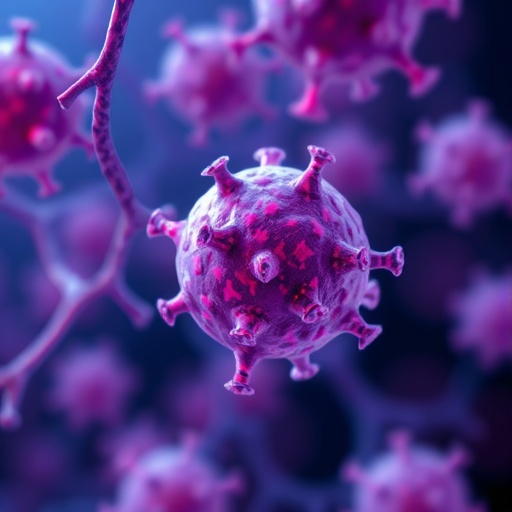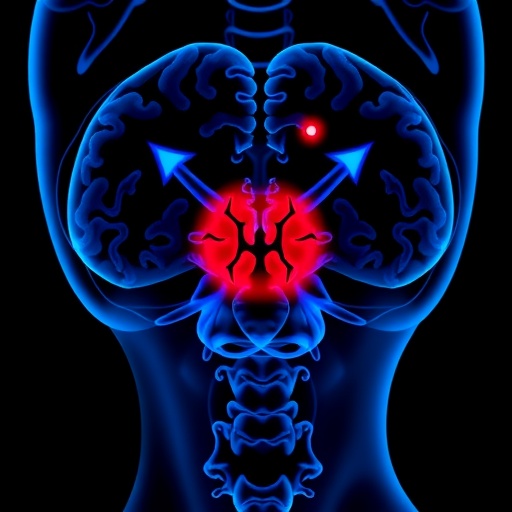A groundbreaking study from Johns Hopkins All Children’s Hospital unveils a novel strategy to harness the natural immune system in combating cancer, offering promising avenues to prevent tumor recurrence and enhance survival outcomes. Utilizing sophisticated mouse models of breast, pancreatic, and muscle cancers, this research demonstrates the therapeutic potential of crafting an immune-conducive tumor microenvironment, fundamentally altering the landscape of cancer treatment.
Malignant tumors have long been typified as “immune cold” due to their ability to evade immune detection and suppress immune activity, rendering many conventional treatments ineffective. This immune evasion has posed significant challenges in oncology, as patients with immune-cold tumors often experience poor responses to chemotherapy and immunotherapy, culminating in dire prognoses. The Johns Hopkins team’s novel approach aims to reverse this phenomenon by transforming these tumors into “immune hot” environments that actively recruit and stimulate immune cells to attack cancer.
Central to this transformative approach are tertiary lymphoid structures (TLSs), which are lymph node-like aggregates that naturally form in sites afflicted by chronic inflammation, including certain tumors responsive to the immune system. TLSs serve as immunological hubs within tumors and have been strongly correlated with improved patient prognoses and responsiveness to therapy. Understanding the factors that foster TLS formation in tumors has been a pivotal goal in harnessing their anti-cancer potential.
Leveraging previous insights in breast cancer immunology, the researchers hypothesized that enhancing the local tumor milieu with specific immune-activating signals could fortify TLS development and functionality. They meticulously studied the complex cellular and molecular landscape of TLS-rich tumors to identify the critical stimuli driving their formation and activity. This reverse-engineering approach provided a blueprint for inducing TLS presence in otherwise TLS-deficient tumors.
The experimental intervention centered on simultaneously activating two key immune signaling pathways: the stimulator of interferon genes (STING) and the lymphotoxin-β receptor (LTβR). STING is a cytosolic DNA sensor that initiates robust innate immune responses, including the production of type I interferons and other inflammatory cytokines, thereby shaping adaptive immunity. LTβR signaling is essential for lymphorganogenesis and maintaining the structural integrity of lymphoid tissues. By delivering agonists that engage both STING and LTβR, the researchers engineered a highly stimulatory tumor environment conducive to immune cell recruitment and activation.
This dual activation regime precipitated a swift and powerful infiltration of cytotoxic CD8⁺ T cells into the tumor microenvironment, directly contributing to pronounced tumor growth inhibition. Notably, the treatment induced the formation of high endothelial venules (HEVs)—specialized blood vessels that function as selective gateways permitting lymphocyte extravasation from the bloodstream into the tumor stroma. The emergence of HEVs effectively opened the floodgates, enabling massive recruitment of both B cells and T cells to forge new TLS in situ.
Within these newly formed TLS, B lymphocytes exhibited hallmark germinal center reactions, a sophisticated immune process whereby B cells proliferate, undergo somatic hypermutation, and mature into plasma cells capable of producing high-affinity, tumor-specific antibodies. These plasma cells not only sustained local antibody production but also migrated to the bone marrow to establish a reservoir of long-lived memory cells. The presence of tumor-specific IgG antibodies and persistent plasma cells underscores the generation of durable systemic immunity capable of long-term tumor surveillance and relapse prevention.
Concurrently, the immunotherapy elevated populations of helper CD4⁺ T cells and memory CD8⁺ T cells, thereby orchestrating a balanced enhancement of humoral and cellular immunity. This comprehensive immune orchestration ensures that both antibody-mediated mechanisms and direct cytotoxic effects contribute synergistically to tumor eradication. Modulating immune signaling balance within the tumor bed appears critical for sustaining sustained anti-tumor activity.
These findings illuminate a mechanistically rich paradigm in which early, dual-pathway immune activation not only exerts immediate cytotoxic effects on tumor cells but also fosters the maturation and persistence of TLS that amplify and sustain anti-cancer immune responses over time. TLS maturation thereby operates as an immunological amplifier system, extending the reach and durability of immune-mediated tumor control well beyond the initial treatment window.
Dr. Masanobu Komatsu, principal investigator and senior scientist at the Johns Hopkins All Children’s Cancer & Blood Disorders Institute, emphasizes the transformative potential of this approach. “By constructing the appropriate immune architecture within tumors, we can potentiate both T cell and B cell defenses against cancer progression, relapse, and metastasis,” he states. This dual-pronged, immune-structural remodeling strategy promises to overcome the entrenched immunosuppressive barriers characteristic of many aggressive cancers.
Because the abundance of TLS has been positively associated with outcomes across diverse tumor types, this dual activation of STING and LTβR may offer a broadly applicable therapeutic avenue. It holds potential to substantially boost the efficacy of existing modalities, including checkpoint inhibitor immunotherapies, which often falter in “immune cold” cancers, as well as traditional chemotherapeutic regimens. Enhancing the tumor’s inherent immune competence could therefore represent a universal adjunct to improve cancer treatment paradigms.
Ongoing research efforts by Komatsu’s team are delving deeper into the complex molecular mechanisms underlying TLS induction and function following STING and LTβR stimulation. Furthermore, preparations are underway to translate these preclinical findings into clinical trials involving both adult and pediatric cancer patients. These future studies aim to validate safety, optimize dosing, and determine the most effective combination regimens to integrate TLS induction with current immuno-oncology standards.
Funded principally by NIH/National Cancer Institute grants alongside support from the Department of Defense’s Congressionally Directed Cancer Research Program and the Florida Department of Health Bankhead Coley Cancer Research Program, this research reflects a significant multidisciplinary collaboration. The work’s potential to fundamentally alter cancer immunotherapy highlights the critical role of federally supported science in pushing the boundaries of medical innovation.
As immunotherapy revolutionizes cancer care, the ability to deliberately engineer tumor microenvironments to foster TLS formation marks a bold and exciting frontier. This therapeutic blueprint exemplifies how reprogramming immune system architecture within tumors can unmask new vulnerabilities in cancer. Ultimately, such innovations stand to shift the paradigm from merely treating tumors to empowering the body’s own immune machinery to deliver durable, systemic tumor control and improve patient survival worldwide.
Subject of Research: Enhancing anti-tumor immunity by inducing tertiary lymphoid structures via dual STING and LTβR activation in immune-cold tumors
Article Title: Therapeutic induction of tertiary lymphoid structures promotes durable anti-cancer immunity in immune-cold tumors
News Publication Date: September 2, 2025
Web References:
https://www.nature.com/articles/s41590-025-02259-8?fromPaywallRec=false#Sec11
References:
Johns Hopkins All Children’s Hospital research publication in Nature Immunology, 2025
Image Credits:
Nature Immunology
Keywords:
Cell lines, Cancer cells
Tags: breast pancreatic muscle cancerscancer immunotherapy advancementscombating tumor recurrenceimmune response in oncologyimmune system enhancementimmune-cold tumorsimmune-hot environmentsimproving cancer survival ratesinnovative cancer treatment strategiesJohns Hopkins cancer researchtertiary lymphoid structurestumor microenvironment manipulation





